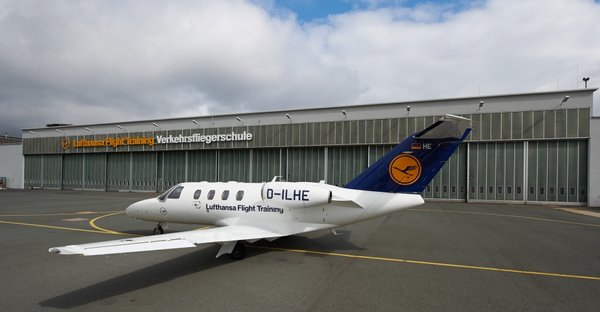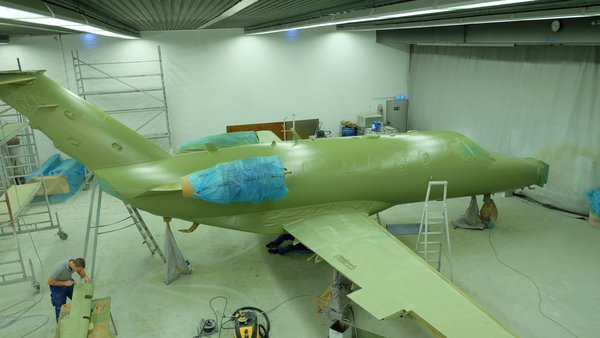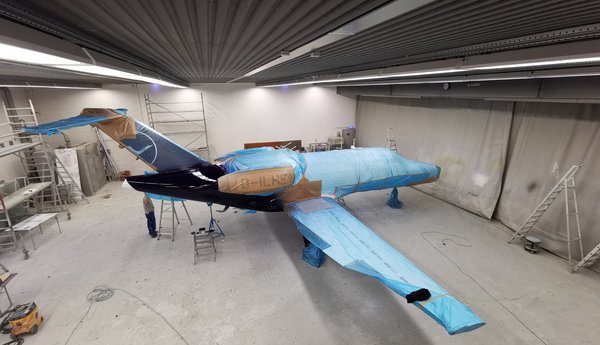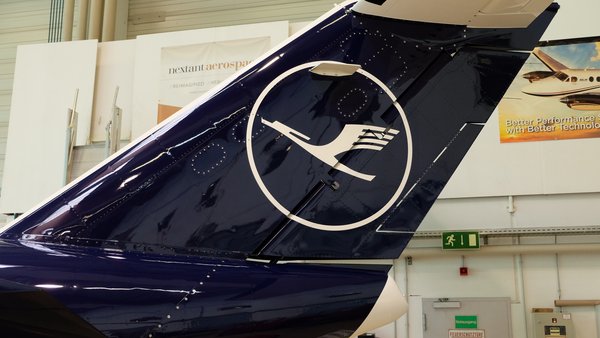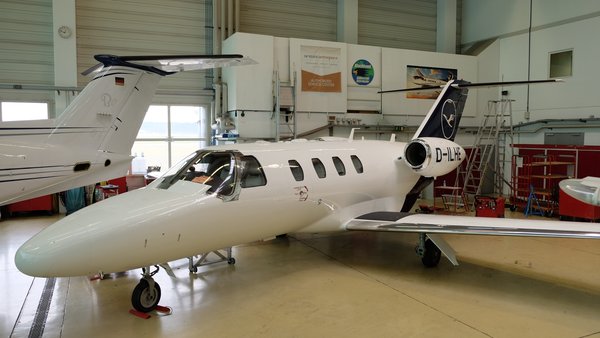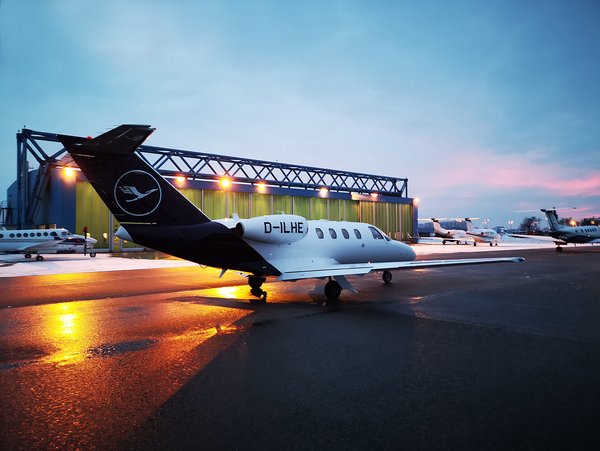Lufthansa has presented its new livery on a Boeing 747-400 in February 2018. Since then, over 40 aircraft of the fleet have been repainted to the new color scheme or joined the fleet as new aircraft in the new colors of the airline.
Part of the Lufthansa training subsidiary's Lufthansa Aviation Training (LAT) fleet will also be adapted to the new brand identity. The first of a total of five Cessna Citation CJ1 + of the LAT aviation pilot school was recently repainted at Augsburg Air Service.
"If we can win the trust of a well-known customer, we are particularly pleased,” says Robert Lemke, a painter at Augsburg Air Service. To paint a plane requires more effort than, for example, spray painting a car. Also, the aircraft paint needs to meet higher demands, because the color dress may not burst even if rapid temperature jumps from -50 degrees Celsius at cruising altitude to +30 degrees Celsius after landing stress the paint regularly.
The Citation CJ1+ of the LAT was first thoroughly washed off and cleaned after landing in Augsburg to remove all oil residues. Otherwise they would prevent the pickling agent from dissolving the paint. Then, the employees carefully taped off all the openings, slots, antennas and the wheel well. "Clean taping is everything," says Robert Lemke. "The stain must not touch any of the antennas and windows or enter into the interior, otherwise the materials may be damaged."
Jets are easier to paint than turboprop or piston aircraft because they have no visible rivets on the surface, making painting easier. However, the "aerodynamic smoothness" must be compensated by exact filler. Aircraft made of fiber composite materials require a different primer compared to metal aircraft, but metal aircraft need more corrosion protection than composite aircraft.
The pickling is repeated several times until the last stubborn paint residues are removed and the plane is only wearing its metal dress. Some parts are not stripped with stain, but mechanically. After stripping, which takes several working days, the paint crew thoroughly washes the aircraft again and removes all covers and tapes. The next step is to pre-grind the surfaces to be painted so that the first layer of corrosion protection and the primer will adhere better. Then the painters tape the jet off again and clean the plane completely with silicone remover. Even fingerprints and dust particles are removed as they could affect the subsequent painting result.
Now it's time that the spray guns are used for the first time. With it, the painters apply the primer in two coats. When dried through under controlled temperature and humidity conditions, the first topcoat paint is applied to the primer. Then the plane is taped and painted with the first design color. These steps are repeated for each additional design color. At the very end of the actual painting process, the refinishers unpack their work and remove all tarpaulins and adhesive tapes. Overall, the painters need between 60 and 80 liters of paint for an aircraft such as the Citation CJ1+ – but not all the paint lands on the plane, a part of it is lost as a spray in the course of the work process.
Parallel to the aircraft, small parts are painted in separate paint booths. Then mechanics install all rudders, cowlings, hand hole covers, flaps and small parts. The removal of irregularities such as possible dust inclusions complete of each painting. The mandatory final inspection is recorded in the paint protocol. Although the paint is exposed to large temperature jumps in a jet, it is still applied only gossamer. Depending on the aircraft type, the paint thickness is between 70 and 130µ, between 0.007 and 0.013 millimeters! "Painting under unusually strict guidelines - at Lufthansa it was accompanied by an audit - represents a very special challenge for us," says Lemke. "But seeing the end result after I know the plane so to speak 'blank' makes me happy every time."
Augsburg Air Service can paint aircraft in their Augsburg facilities up to the size of a Beechcraft King Air 350. The company currently paints two to three aircraft a year completely and carries out 15 partial paint jobs. Anyway, the first Citation CJ1 + is back in Bremen at Lufthansa Aviation Training and now shines on her training flights across Europe in the same color scheme as her big sisters flying all over the world.
(Author: Volker K. Thomalla, https://www.aerobuzz.de/ - full article & gallery)
Augsburg Air Service: Lufthansa Aviation Training’s first CitationJet CJ1+ repainted
